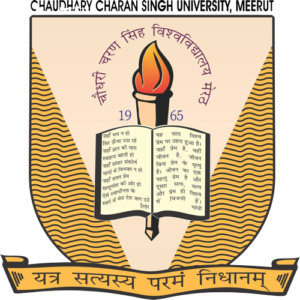
B.Sc. in Visual Effects and Animation: Admission Process, Eligibility Criteria, Duration, Course fees, Highlights, Subjects, Syllabus, FAQ.
B.Sc. in Visual Effects and Animation Overview:
- Program Overview:
- Duration: A typical B.Sc. Visual Effects and Animation program often spans three to four years.
- Focus: The program is designed to provide students with a comprehensive understanding of visual effects and animation techniques used in the entertainment industry, including film, television, gaming, and interactive media.
- Curriculum:
- Foundation Courses: Students usually begin with foundational courses covering art and design principles, drawing, and basic animation concepts.
- Core Courses: The curriculum typically includes core courses in 2D and 3D animation, visual effects, digital modeling, texturing, lighting, and rendering.
- Specialized Courses: Depending on the program, students may have the opportunity to specialize in specific areas such as character animation, motion graphics, simulation, compositing, or virtual reality.
- Industry Software: Students often learn to use industry-standard software tools such as Autodesk Maya, Adobe After Effects, ZBrush, and others.
- Practical Experience:
- Projects: Practical projects and assignments are a crucial component, allowing students to apply theoretical knowledge to real-world scenarios.
- Internships: Some programs may offer internship opportunities, providing students with hands-on experience and exposure to the professional industry.
- Electives and Interdisciplinary Studies:
- Some programs may offer elective courses, allowing students to tailor their education to their specific interests within the broader field of visual effects and animation.
- Interdisciplinary studies may involve collaborations with students from other related fields like film, computer science, or game design.
- Industry-Relevant Skills:
- Students are expected to develop skills in areas such as 3D modeling, character animation, visual effects compositing, storyboarding, and digital art.
- Understanding the technical aspects of animation and visual effects production pipelines is often emphasized.
- Career Opportunities:
- Graduates of B.Sc. Visual Effects and Animation programs can pursue careers in animation studios, film and television production companies, game development studios, advertising agencies, and more.
- Job roles may include 3D animator, visual effects artist, character designer, storyboard artist, motion graphics designer, and others.
- Portfolio Development:
- Building a strong portfolio showcasing one’s work is often a crucial aspect of the program, as it can significantly impact job opportunities upon graduation.
B.Sc. in Visual Effects and Animation Eligibility:
- Educational Qualifications:
- Candidates are typically required to have completed their higher secondary education (12th grade) or an equivalent qualification from a recognized educational board.
- Academic Background:
- While specific academic requirements may vary, a background in arts, fine arts, design, or a related field is often preferred.
- Minimum Marks:
- Many institutions may have a minimum percentage or grade requirement in the qualifying examination. This minimum can vary, but competitive programs may have higher entry standards.
- Entrance Exams:
- Some universities or institutes may require candidates to take entrance exams specific to the visual effects and animation program. These exams may evaluate skills in drawing, design, and creativity.
- Portfolio Submission:
- In some cases, applicants may be required to submit a portfolio showcasing their artistic and creative work. This could include drawings, digital art, or any relevant projects that demonstrate their skills and potential in the field.
- Language Proficiency:
- Proficiency in the language of instruction (often English) may be required. This might be assessed through standardized language proficiency tests such as the TOEFL or IELTS for international students.
- Interview/Personal Statement:
- Some institutions may conduct interviews or require applicants to submit a personal statement explaining their interest in visual effects and animation, career goals, and any relevant experiences.
B.Sc. in Visual Effects and Animation Why to do?
- Passion for Animation and Visual Effects:
- If you have a genuine interest and passion for animation, visual effects, and digital art, pursuing a B.Sc. in Visual Effects and Animation allows you to delve deep into this field and develop your skills.
- Creative Expression:
- Animation and visual effects are powerful mediums for creative expression. This program provides you with the opportunity to explore and express your ideas through storytelling, character design, and animation techniques.
- In-Demand Industry Skills:
- The entertainment industry, including film, television, gaming, and advertising, has a growing demand for skilled professionals in visual effects and animation. By obtaining a B.Sc. in this field, you equip yourself with the technical skills and knowledge required in the industry.
- Diverse Career Opportunities:
- Graduates of visual effects and animation programs can pursue diverse career paths. Whether you’re interested in 3D animation, visual effects compositing, game design, or motion graphics, this degree opens up various opportunities within the creative and media industries.
- Contribution to Films and Media:
- Animation and visual effects play a crucial role in the creation of films, TV shows, advertisements, and other media productions. By entering this field, you become part of the process of bringing stories and ideas to life through the magic of animation.
- Technological Advancements:
- The field of visual effects and animation is constantly evolving with advancements in technology. Pursuing a B.Sc. in this field allows you to stay updated on the latest industry trends and technologies, keeping your skills relevant.
- International Collaboration:
- Animation and visual effects projects often involve collaboration with professionals from around the world. This field provides opportunities for international collaboration and exposure to diverse creative perspectives.
- Portfolio Development:
- The program typically includes projects that contribute to the development of a strong portfolio. A well-crafted portfolio is essential for showcasing your skills and securing employment in the competitive field of animation and visual effects.
- Entrepreneurial Opportunities:
- Some individuals choose to use their skills to start their own animation studios, freelance, or work on independent projects. The program can provide the knowledge and skills needed for entrepreneurial ventures in the creative industry.
- Contribution to Virtual and Augmented Reality:
- With the rise of virtual and augmented reality technologies, professionals in visual effects and animation are increasingly involved in creating immersive and interactive experiences, opening up new and exciting possibilities for creativity.
B.Sc. in Visual Effects and Animation Highlights:
Aspect | Description |
Duration | Typically 3 to 4 years |
Focus | Visual Effects and Animation techniques |
Core Courses | 2D and 3D animation, visual effects, digital modeling |
Specializations | Character animation, motion graphics, virtual reality |
Software | Autodesk Maya, Adobe After Effects, ZBrush, etc. |
Projects | Practical projects and assignments for hands-on experience |
Internships | Opportunities for real-world industry exposure |
Electives | Options to specialize and tailor education |
Career Opportunities | 3D animator, visual effects artist, motion graphics designer |
Portfolio Development | Emphasis on building a strong portfolio |
Eligibility | Higher secondary education or equivalent qualification |
Entrance Exams | Some programs may require specific entrance exams |
Language Proficiency | Proficiency in the language of instruction (e.g., English) |
Personal Statement/Interview | Submission of a personal statement or interview in some cases |
Passion | Ideal for those with a passion for animation and digital art |
Industry Demand | Growing demand for skilled professionals in entertainment |
Creativity | Opportunity for creative expression and storytelling |
Technological Advancements | Keeping up-to-date with industry trends and technologies |
Diverse Opportunities | Career paths in film, TV, gaming, advertising, and more |
Portfolio Development | Essential for showcasing skills to potential employers |
Entrepreneurial Options | Potential for starting animation studios or freelancing |
Immersive Technologies | Involvement in virtual and augmented reality projects |
B.Sc. in Visual Effects and Animation Admission Process:
- Meet Eligibility Criteria:
- Ensure that you meet the eligibility criteria for the program, which typically includes completing higher secondary education (12th grade) or an equivalent qualification.
- Research and Choose Universities/Institutions:
- Research different universities or institutions offering B.Sc. Visual Effects and Animation programs. Consider factors such as program reputation, faculty, infrastructure, and industry connections.
- Application Form:
- Obtain the application form from the respective university or institution. This form is usually available on the official website or through the admissions office.
- Fill Out Application Form:
- Complete the application form with accurate and relevant information. Pay attention to the details required, and ensure that all supporting documents are included.
- Entrance Exams (if applicable):
- Some universities may require applicants to take entrance exams specific to the visual effects and animation program. Prepare for and take any required exams.
- Portfolio Submission (if required):
- Some institutions may request a portfolio showcasing your artistic and creative work. This could include drawings, digital art, or any relevant projects that demonstrate your skills and potential in the field.
- Submission of Supporting Documents:
- Submit all required supporting documents, including academic transcripts, certificates, letters of recommendation, and any other documents specified by the university.
- Language Proficiency Test (if applicable):
- If the program is taught in a language other than your native language, you may need to demonstrate proficiency through standardized tests such as TOEFL or IELTS.
- Personal Statement or Interview (if required):
- Some institutions may require applicants to submit a personal statement explaining their interest in visual effects and animation, career goals, and any relevant experiences. In some cases, an interview may be part of the process.
- Application Fee:
- Pay the application fee as specified by the university. This fee is non-refundable and covers the cost of processing your application.
- Review and Selection:
- The admissions committee will review applications and select candidates based on academic performance, test scores, portfolio (if applicable), and other criteria.
- Admission Notification:
- Once the review process is complete, the university will notify you of the admission decision. This may be done through email, an online portal, or traditional mail.
- Acceptance and Enrollment:
- If admitted, follow the instructions for accepting the offer and completing the enrollment process. This may involve paying an acceptance fee and providing additional documentation.
- Orientation and Registration:
- Attend orientation sessions and complete the registration process as outlined by the university. This may include selecting courses and getting acquainted with campus facilities.
B.Sc. in Visual Effects and Animation Top Colleges for the Course:
- Whistling Woods International Institute, Mumbai
- Arena Animation (Various Centers across India)
- Maya Academy of Advanced Cinematics (MAAC, Various Centers)
- Frameboxx Animation and Visual Effects, Mumbai
- Zee Institute of Creative Art (ZICA, Various Centers)
- Vellore Institute of Technology (VIT), Vellore
- Symbiosis Institute of Media and Communication (SIMC), Pune
- Manipal University, Manipal
- Amity School of Fine Arts, Noida
- Asian Academy of Film & Television (AAFT), Noida
B.Sc. in Visual Effects and Animation Syllabus:
- Foundation Courses:
- Drawing Fundamentals
- Design Principles
- Color Theory
- Art History
- Core Courses:
- 2D Animation
- 3D Animation
- Digital Modeling
- Texturing and Lighting
- Rigging and Character Animation
- Visual Effects
- Digital Compositing
- Storyboarding
- Sound Design for Animation
- Digital Sculpting (e.g., ZBrush)
- Specialized Courses:
- Motion Graphics
- Virtual Reality (VR) and Augmented Reality (AR)
- Special Effects
- Gaming Animation
- Simulation and Dynamics
- Software-Specific Courses:
- Autodesk Maya
- Adobe After Effects
- ZBrush
- Cinema 4D or Blender
- Autodesk Mudbox
- Industry Practices:
- Animation Production Pipeline
- Project Management in Animation
- Portfolio Development
- Electives:
- Advanced 3D Animation
- Advanced Visual Effects
- Advanced Motion Graphics
- Advanced Game Design
- Internship and Industry Experience:
- Practical training or internship in animation studios or related industries.
B.Sc. in Visual Effects and Animation FAQ Answer with Question:
Q: What is the duration of a B.Sc. in Visual Effects and Animation program?
A: Typically, the program spans three to four years.
Q: What are the key focus areas of the B.Sc. Visual Effects and Animation program?
A: The program focuses on imparting knowledge and skills in visual effects and animation techniques used in various entertainment mediums such as film, television, gaming, and interactive media.
Q: Which software tools are commonly used in B.Sc. Visual Effects and Animation programs?
A: Industry-standard software tools include Autodesk Maya, Adobe After Effects, ZBrush, and others.
Q: Are there opportunities for specialization within the program?
A: Yes, students often have the opportunity to specialize in areas such as character animation, motion graphics, simulation, compositing, or virtual reality.
Q: What kind of projects are included in the program?
A: Practical projects and assignments are integral to the program, allowing students to apply theoretical knowledge to real-world scenarios.
Q: Are internships part of the B.Sc. Visual Effects and Animation program?
A: Yes, some programs offer internship opportunities, providing students with hands-on experience and exposure to the professional industry.
Q: What career opportunities are available for graduates of this program?
A: Graduates can pursue careers in animation studios, film and television production companies, game development studios, advertising agencies, and more. Job roles may include 3D animator, visual effects artist, motion graphics designer, and others.
Q: Is a portfolio important in the B.Sc. Visual Effects and Animation program?
A: Yes, building a strong portfolio showcasing one’s work is often a crucial aspect of the program, as it significantly impacts job opportunities upon graduation.
Q: What are the eligibility criteria for admission to B.Sc. Visual Effects and Animation?
A: Eligibility typically includes completing higher secondary education (12th grade) or an equivalent qualification. Specific academic background and minimum marks may also be required.
Q: How can I stay updated on the latest industry trends and technologies during the program?
A: The program often includes staying informed about technological advancements, industry practices, and trends within the visual effects and animation field.

















